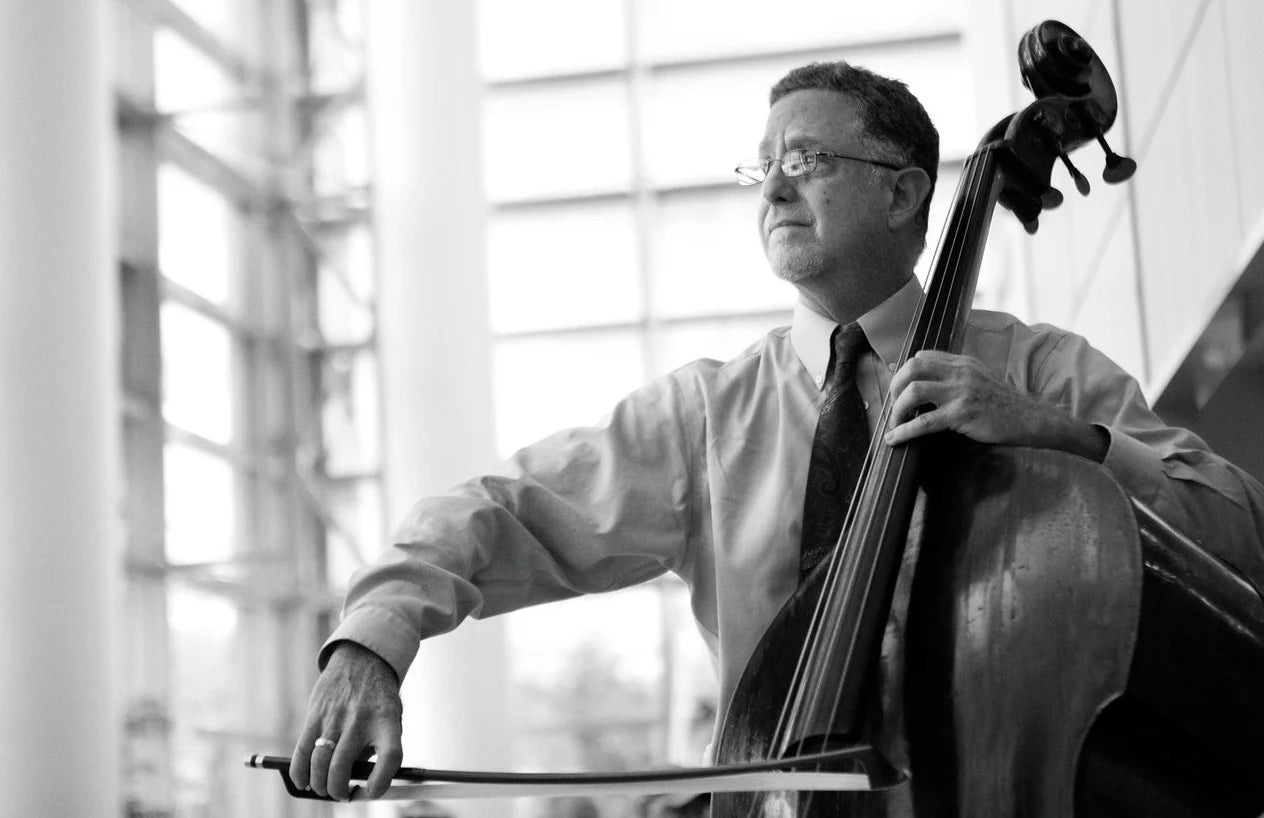Marcos Machado
Marcos Machado: Tao of Bass, Volume I, The Left Hand
Marcos Machado: Tao of Bass, Volume I, The Left Hand
Couldn't load pickup availability
About Tao of Bass
A comprehensive compendium of left-hand techniques. The book has over 200 pages with more than 500 exercises for the left hand. Beginner to virtuoso levels. This is the e-book version.
Introduction
Because human beings share the same basic physiology, there should be no major differences when performing an activity, be it playing a sport or playing a musical instrument.
However, individuals vary in such characteristics as height, arm and finger length, thickness of finger pads, and so on.
It is, therefore unrealistic to teach a single, unvarying system of playing the double bass. Adjustments can be made to suit students' varying physiological needs as long as these small changes do not alter the basic governing principles of string playing.
There are many schools of double bass (Czech, German, Italian, French, Bulgarian, Hungarian, Dutch, etc.), each with its own set of rules for fingerings, bow hold, etc. While each is important for its historical value, many rely on now obsolete concepts. Some of the traditional methods were developed at times in which the double bass was strung with gut strings or worse, with harsh, underdeveloped metal strings. The past few decades have witnessed a revolution in the development of the double bass technique and one should embrace these changes. Double bass playing is an art, and as such, there can be no single right or wrong approach. This is the danger of the narrow nationalistic approach, which ignores individuals strengths and weaknesses in favor of perpetuating someone else's view of how one should play the double bass.
The Tao of Bass rejects some of the rigid rules that have been present for years in some traditional double bass schools.
For example, while traditional schools favor using only three fingers in the lower positions, the Tao of Bass suggests that double bassists should use all the left hand fingers equally, independently, in all positions. 'This will vary according to the student's particular strengths and weaknesses; there can be no one-size-fits-all in double bass playing. Each musician should identify his or her own fingering and bowing solutions.
This book is intended to be used as a tool to train the left hand and elevate the skill level of the double bassist. 'The variety of exercises, including many permutations of patterns, will help students think logically and develop their analytical comprehension of future left-hand challenges found in the repertoire. I advise students to choose, with the guidance of a teacher, the appropriate exercises to complement their main practice routine consisting of scales, etudes, solos, orchestra excerpts, etc.
To deliver a creative, inspiring performance, one cannot take technical shortcuts. At the same time, all the technique in the world will not make one an artist. Simply performing technical exercises mechanically is not sufficient; when working on these exercises the mind must be actively engaged.
Even on the purely mechanical exercises students should focus on sound quality, intonation, flexibility of the hand, articulation, direction (grouping), etc. When all of these elements are observed, you will notice that even exercises that first appear dull will sound musical. Everything must be perfect, or you risk ingraining bad habits by practicing incorrect techniques day after day. The exercises in this book will help you master left-hand techniques in a manner that will eventually feel and look natural and relaxed, even when using extensions. Aim to transform the initially conscious movements into unconscious ones, enabling you to focus on the musical qualities described above.
After you've discussed with your teacher your specific left-hand needs, practice a small set of exercises for a short period of time daily to gradually increase your endurance, stamina, and flexibility. Set specific goals before you pick up your instrument. Be aware of the areas in which you need to improve. Avoid working only on what feels good and that which you have already mastered.
Carefully and systematically add new exercises so your fingers, hands, and arms can adapt to the new movements without injury. It takes time to acquire new patterns, as the neurophysiological events involved in this process begin to adjust the muscles to these new movements.
Most of the exercises in this book should be practiced in different keys and various positions. Be inventive. Be aware that some exercises will not be right for you; when you encounter these, just ignore them. The guidance in this book represents a small but crucial stage on your lifelong journey to develop as an artist. Don't worry that these technical exercises will transform vou into an insensitive musician; on the contrary, they will help you learn to express yourself fully and become a better artist.
It is my hope that you will find in this book a path that is appropriate for you and will help guide your technical development.
About Marcos Machado
Dr. Marcos Machado is a Brazilian-American world-renowned performer and teacher. He is Professor of double bass at The University of Southern Mississippi and is the founder and pedagogic director of the Festival Internacional Música no Pampa (FIMP Bagé) in Brazil, now in its tenth year.
Machado has earned both “teaching” and “performing” diplomas from the L’Institut International de Contrebasse de Paris under esteemed double bassist François Rabbath. He has recorded two solo albums with Brazilian pianist Ney Fialkow, the latest being “Fantasy” (2018). As part of the Austin-based Conspirare Ensemble, he has toured and recorded the CD “Threshold of Night,” which received two Grammy nominations, and “A Company of Voices - Conspirare in Concert” which also received a Grammy nomination.
Machado has published two volumes of “Tao of Bass,” starting a revolution in left-hand technique, which has been adopted as a required technique book by many universities.









